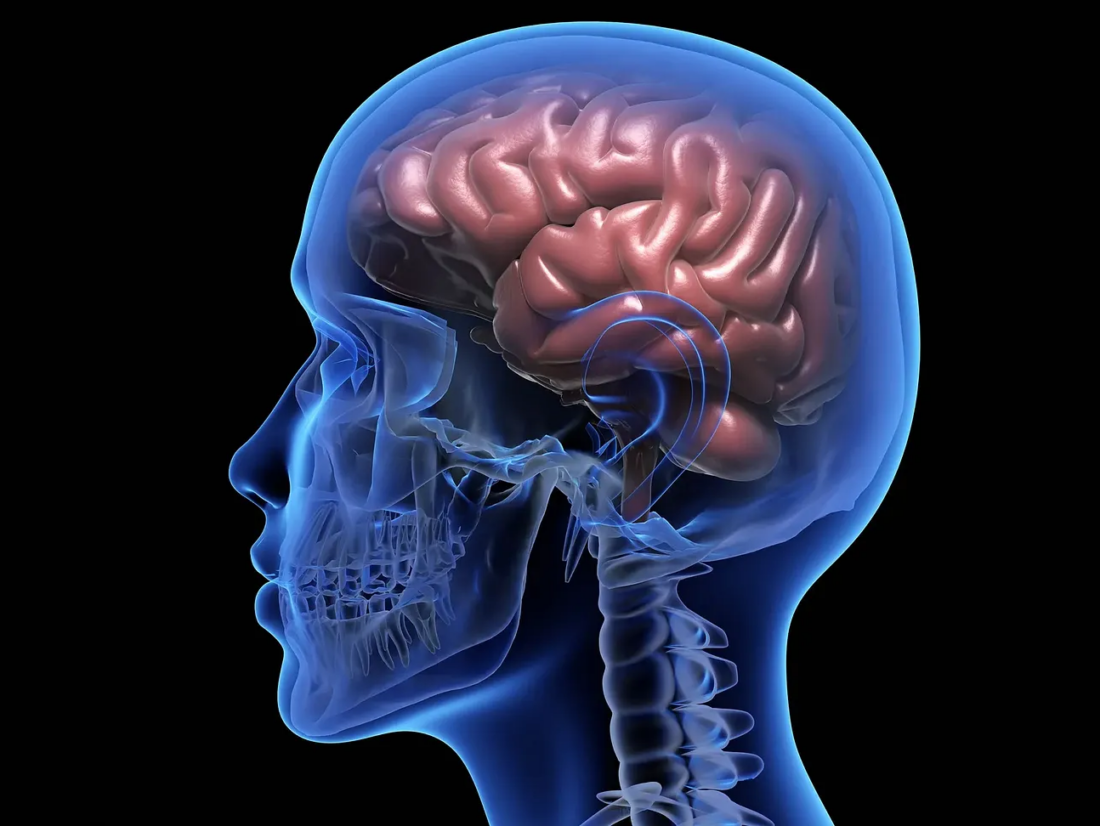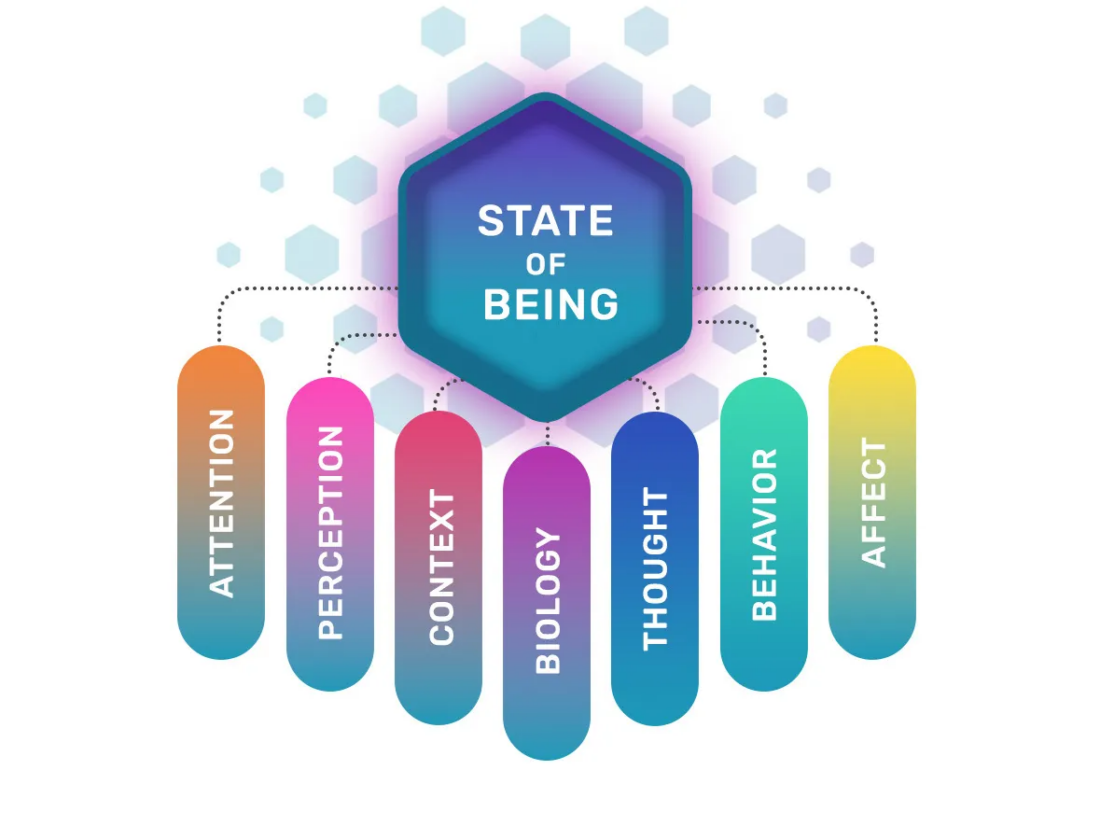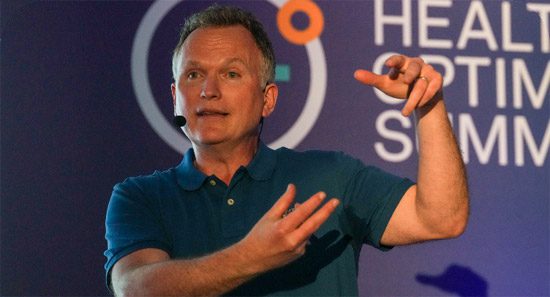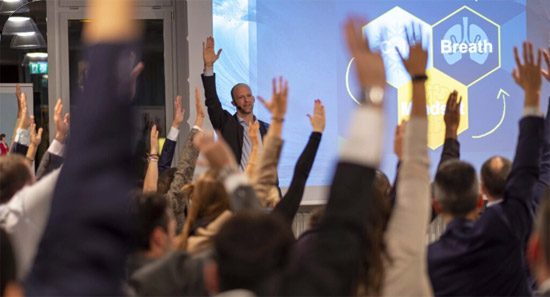To feel your best and live your best life you need to train your brain and take charge of your state. This is the secret to brain optimization, to feeling your best and living your best life.

Imagine this — you are wanting to walk down a road towards a location called Optimal Health. You start walking, but something happens and you decide to turn around after 100 yards and walk in the opposite direction.
This puts you on the path towards Poor Health. You walk for another 200 yards, then decide to walk back towards Optimal Health.
And so it goes. Back and forth. Back and forth.
Much movement, many decisions, going nowhere.
Until you make a decision to make optimal health a priority and build into your daily life consistent routines and habits that keep us heading towards optimal health, you go nowhere.
Overtime and without the presence of specific protective habits, brain function will naturally transition from functional to dysfunctional and possibly to disease.
Everyday, in every waking moment, you are training your brain.
The decisions you make and the experiences you have are dynamically reshaping both the activity and micro-structure of your brain.
Tuning into gratitude will shape it in one direction.
Resentment another.
The more we repeat these decisions and create these experiences the more these become default pathways for the brain.
We become what we train.
Given this, it would be wise to ask yourself:
‘Am I consciously making decisions and creating experiences that are moving me and my brain in a direction I want to go?’
As a functional medicine physician and human potential teacher with 25 years experience helping clients optimize their health, I’ve seen and learnt what is necessary to protect and improve brain health.
What level is your brain at?
An optimally functioning brain and nervous system gives rise to a body and mind that is vital, resilient and adaptive.
Your mind is clear, intellect sharp and memory great. You shift mental gears easily, going from deep focus to relaxed awareness effortlessly. You direct your attention consciously. You are happy, at ease, fulfilling your potential. You are present and aware, open and responsive, experiencing inner freedom and flow.
A brain and nervous system that is becoming dysfunctional gives rise to hallmark patterns and characteristics. To name a few — excessive mental chatter, distractibility, low or agitated mood, psychological ‘stuckness’, tendency to reactivity and being defensive, blame, irritability, fatigue, brain fog, addictions, compulsions, obsessions, anxiety, low motivation, deteriorating memory, cognitive decline, depression, absence of purpose, ill-health, lack of fulfillment, relationship difficulties.
So what kind of brain training can you do when symptoms of dysfunction are present?
There are two types of brain training:
1) Lifestyle-Assisted Brain Training — Positive lifestyle changes provide the building blocks for brain health. These are foundational.
2) Tech-Assisted Brain Training — Specific neurotechnologies, applied appropriately, in a way personalized to your desired outcomes, accelerate movement towards optimal brain function and health. I call these Tech-Assisted Brain Training.
Focusing on both is optimal.
Let’s dive in.

Lifestyle-Assisted Brain Training
There will be few surprises here as most people know what a healthy lifestyle looks like. The challenge is usually not knowing how to bring about sustainable change.
A great book on this is Tiny Habits by BJ Fogg.
Below are some healthy lifestyle habits that I would recommend exploring.
Ditch/limit added sugars, seed oils and ultra-processed foods.
Few people want to hear this, but for optimal brain health, these have to be limited. A good resource is Patrick Holford’s book Optimum Nutrition for the Mind with Patrick Holford.
Eat close to an optimal diet.
Optimal means tailored to you and your genetic / metabolic needs, values, preferences, lifestyle and finances. Ideally work with a health practitioner with a specialist interest in optimal health who can help you design a diet based on the results of tests that could include nutrition-focused DNA tests, metabolic blood tests, microbiome tests and continuous glucose monitoring.
A step down from that, but good for most would be a low glycemic, modified mediterranean diet. Essentially a nutrient dense, whole food diet rich in green leafy vegetables, colorful vegetables, berries, nuts (especially walnuts and macadamia), fish and extra virgin olive oil.
Studies have shown the diet can help reduce the rate of cognitive decline and reduce shrinkage of the hippocampus, the part of the brain responsible for memory. For further exploration take a look at the MIND diet.
Get moving and keep moving.
Daily physical activity -walking (30-minutes plus a day), aerobic fitness training (3 to 4 times a week), high-intensity intervals (1 to 2 times a week) and strength training (2 to 3 times a week) are all essential for enhancing brain health and minimizing cognitive decline. They stimulate the release of brain derived neurotrophic factor (BDNF), improve insulin sensitivity, discharge stress and improve body mass composition.
Optimal exercise for most people would involve about an hour of exercise a day. A recommended resource for movement is the book The Align Method by Aaron Alexander .
Prioritize sleep
Most people need between 7 and 9 hours per night. Sleep improves metabolic health, activates the glymphatic system to clear metabolic waste and reduces inflammation. Don’t use your alarm to wake you up, but use it to tell you when to go to bed.
Minimize exposure to blue light at nighttime and expose yourself to sunlight and/or full-spectrum light early am. Top supplements to consider to support sleep: magnesium bisglycinate and l-theanine. A great book on sleep is Matt Walker’s Why We Sleep.
Learn to regulate your stress and emotions
Many people live under pressure and experience the signs and symptoms of distress. Worry, impatience, apathy, fatigue, tension, reactivity, combined with an absence of inner ease and wellbeing all point to stress.
Acknowledging and admitting you are stressed is a good first step. Then ask yourself ‘what do i need?.’ Don’t rush to an answer. Allow it to percolate and you might be surprised by what comes up.
It could be anywhere along a continuum of ‘I need an early night sleep’ to ‘I need to admit I am in a job / relationship I no longer want to be in’. You can use your breathing pattern to modulate your state.
Dr Huberman’s double inhale is very good for relaxing. For a complete breath training system I recommend Patrick McKeown. I cover more on how to modulate your state and manage your stress response in part 2.
Keep engaged and mentally active
You lose what you don’t use. And so it is with brain function. Finding hobbies, keeping curious and interested in life, learning new things, challenging yourself and finding meaning in your day to day existence all help to stimulate and challenge your brain. Add to that, keeping socially active and listening to music can help and support optimal brain functioning.
Address the underlying drivers of brain dysfunction
If you are experiencing unexplained problems with cognition, then consider working with a functional medicine practitioner.
Most will be able to help you address drivers of brain disease including: stress, trauma, inflammation, insulin resistance (pre-diabetes and diabetes), infections (such as EBV and Lyme disease), GI imbalance (leaky gut, dysbiosis), toxicity (mercury, mycotoxins), food sensitivities/allergies, dental problems, sub-optimal hormones (thyroid, DHEA, testosterone, progesterone, oestrogen), APOE4, sleep apnea, nutrient insufficiencies/deficiencies, iatrogenic (medications, illicit drugs).
A very enlightened program and excellent resource is Dr Dale Bredesdens RECODE program. He also has a book called The End of Alzheimer’s: The First Program to Prevent and Reverse Cognitive Decline.
Integrate the practice of meditation
Long-term meditators as a whole have a nervous system and way of being that is generally more present, calm, balanced and responsive.
The key is to find a system of meditation that you enjoy. There are many forms for you to explore. Go with what feels right. Some options include: mindfulness training, loving kindness training, effortless mindfulness, movement meditation, 5Rhythms, OSHO active meditations and what the spiritual teacher Adyashanti calls True Meditation. Many systems of Yoga also integrate meditation and breath work.
Also refer to this article to dive deeper into the different meditation styles and figure out which one may be right for you.

Tech-Assisted Brain Training
Building on the foundations of a healthy lifestyle, we can use technology to accelerate and amplify our ability to harness the full potential of our brain and us.
Neurofeedback
For many years, its use was restricted to clinics and expensive neurofeedback 5 to 7 day intensives. However, more affordable home-use neurofeedback technologies such as Sens.ai have become available.
Its headset and app provide real-time reading of a user’s brainwaves (neuro) and conversion into audio and visual cues back to the user (feedback). The system rewards (more cues) the desired brainwave patterns to reinforce strengthening (training). It works through the process of operant conditioning, a type of training that involves rewarding desired brain wave frequencies.
When repeated overtime this rewires brain patterns. Sens.ai allows you to select and train a particular brainwave frequency, which are in turn associated with particular outcomes.
The key with neurofeedback is consistency of use (daily is ideal), personalization of the protocol (based on desired outcomes) and accuracy and fidelity of signal. Check out this article from Paola Tefler, Sens.ai’s CEO for further reading
Coherence training
Anytime you are feeling connected and in tune with another human being or an internal sense of harmony and aliveness, chances are you are in coherence. It’s a trainable state of optimal mind/body functioning in which our physiological systems function more efficiently and our emotional stability, mental clarity and cognitive functioning is enhanced. In coherence, we feel energized and engaged, calm and balanced.
Here is a quick way to access coherence.
Allow your attention to be based in the area of your heart. Allow your eyes and tongue to be soft. Breathe into the count of 5 through the nose and 5 on the out-breath. Repeat for a minute or two. This is what coherence feels like. It’s a great way to bring your nervous system back into balance and to prime your brain’s responsiveness to neurofeedback.
Light Stimulation (photobiomodulation)
Light is a powerful stimulator of biological processes. Transcranial photobiomodulation (tPBM) uses light of a particular near-infrared wavelength to activate mitochondrial function within the targeted cells and tissues of the brain. Several studies have found that tPBM can enhance brain cell oxygenation and improve cerebral blood flow, metabolic activity, neurogenesis, and neuroprotection by antioxidant and anti-inflammatory pathway activation.
Now we are going to explore how to take charge of your state.
State is shorthand for your State of Being.
It’s the totality of how you are feeling and showing up now. It’s the primary determinant of how you feel and how you are in this moment.
We exist within a fluctuating undulating state.
Picture this scenario.
Didn’t sleep well? That will create a tired state from which certain patterns of thinking and behaving automatically arise. You compensate with a filter coffee. 30-minutes later the caffeine shifts you into a state of alert focus. That feels better.
Someone you care about calls. You smile and receive their positivity, the chemical oxytocin shifts you into a state of caring and affection. The call ends, and an image of your boss immediately comes to mind.
An internal alarm goes off. Your body tenses up, your focus zoomed in and the worry-based story in your head, more compelling, louder. You reach for a cookie. That feels better. The day unfolds as a rollercoaster of emotions and compensatory state changes designed to help you survive the day.
Many of these behaviors are automatic, unconscious, programmed reactions to cues from our internal and external environment.
This is not a problem, if it doesn’t cause a problem and enables you to meet the demands of life.
It becomes a problem when it causes a problem (for you or others), and doesn’t enable you to meet the demands of life.
For example, addictions (to food, alcohol, drugs, gambling, work etc) often start out as adaptive attempts to regulate our state, soothe the way we feel and regain a sense of control when we feel overwhelmed.
As they take hold, you become fixated, tolerance kicks in (a higher dose or more intensity is required to get the same effect), withdrawal symptoms arise and negative consequences for us and others are more likely. The addiction dominates our thinking, controls our actions and impairs our ability to be in a conscious and healthy relationship with reality. It becomes in charge of us.
On the other end of the spectrum, are people who are essentially healthy, without addictions and focused on fulfilling their potential at work and in life. However, they rely on a combination of stress, stimulants and/or sugar to modulate their energy and motivate them into action.
Whilst functional, and functioning okay, many start to notice (perhaps in their 30s or 40s) the presence of negative consequences of their default state management strategies. The stress is leading to heightened anxiety, disturbed sleep and an increasing reliance on alcohol or cannabis to take the edge off at night time. They might notice they are increasingly agitated at work and disconnected in their personal relationships. In summary, they sense their potential, want to do better, but don’t know how.
Whether it’s dealing with addictions or improving health and performance, taking charge of your state throughout the day is an essential part of becoming a more conscious, healthy, high-performing human being.
State management and state optimization is a big topic, but to get you started here are two ways to start taking charge of your state.

Thought Stream On, Thought Stream Off
Taking control of your state starts by learning how to deactivate the habitual thought stream and mental chatter that for many people is out of control. Like a tap connected to a water supply, most people have a tap that is constantly on. Optimally we turn on the tap when we require water and turn it off when we don’t. And so it is with the thinking process, we can learn how to turn the flow of thinking on and off.
As you follow the instructions, refrain from thinking about the instructions, instead follow the instructions without trying to grasp anything or make anything happen.
- Look straight ahead, soften your eyes and de-focus your gaze, whilst tuning into the space between your eyes and the objects in front of you.
- Soft eyes.
- Next, allow your tongue to be completely soft. Mouth open slightly.
- Soft eyes. Soft tongue.
- Without returning to the front of the head to think, be with your soft tongue.
- Notice what has happened to your thought-stream.
- You will notice the mind has gone quiet. Possibly still.
- Softening your gaze activates the body’s relaxation response (mediated by the parasympathetic nervous system) and allowing your tongue to be soft you cease subvocalization — the internal story-creating, talking-to-yourself, mental chatter. Subvocalization is mediated through and correlates with the micro-tension patterns of the tongue. The tension pattern of the tongue turns on and off the thought-stream.
- Try this. Start thinking about something and notice what happens to your tongue. It becomes tense and moves upward. Now allow your eyes and tongue to be soft and watch the stream of thinking settle.
- By taking control of the on/off switch for our thought-stream we discover that we have the means to shift on-demand out of a thought-based, narrative-derived sense of self, into an open, clear and present awareness-based sense of self. This capacity to shift identity and state effortlessly has been a revelation for the many people I have taught this to. With practice it becomes effortless. This is step one.

Create Internal Safety
The next step in state training is learning how to consciously create internal safety. Thanks to the pioneering work of Professor Stephen Porges, we know that our nervous system is constantly evaluating the information streaming into the body from the environment and the information arising from the body and mind for indicators of threat.
This process (of neuroception) takes place below the level of awareness. It’s a threat detection system that is constantly assessing whether this moment is safe, threatening/challenging or life-threatening and by doing so mobilizes a pre-programmed response accordingly.
Recall a situation that was challenging or stressful to you. Your Fight/Flight system (sympathetic nervous system) became activated initiating a cascade of chemical, physiological, psychological and behavioral shifts. This happened automatically. Energy was mobilized, heart rate and breathing rate went up, focus became narrowed, muscle tone increased.
In Fight, anger is mobilized. In Flight, the body is mobilized to run. This places you in a specific state (a defensive state) designed to take action that will resolve the threat. If the threat is perceived as life-threatening or too overwhelming, and the sympathetic response is ineffective, the Fold/Fawn dorsal parasympathetic response becomes activated.
In Fold, we collapse and become disassociated and numb. In Fawn, we yield to something or someone who has power over us.
Are any of these familiar to you?
When the threat is resolved, the cues of safety present and the felt sense (a whole sense of a situation) within the body is welcomed a remarkable neurological shift and release happens.
The ventral vagal branch of the parasympathetic nervous system and social engagement system becomes activated. We feel connected and seek to connect with others. This can give rise to the experience of Flow and Stillness (a blend of ventral vagal and dorsal), Fun & Playfulness (a blend of ventral and sympathetic) and Flock (the ventral state of grounding, safety, resourcefulness and presence).
With training you can learn how to access these ventral states and return to these states on-demand.
The challenge for most people is they live in a near-constant state of activated, defensiveness (sympathetic, dorsal vagal or a blend of both) either because a real threat is present within their environment and/or more commonly they are relating to their inner experience of the present moment in a way that is threatening.
What does the internal generation of threat look like?
It’s resisting what is arising within your experience. It’s denying or pushing away your emotions and experience. It’s believing the inner critic. It is being harmful or hurtful to yourself. It is operating from a belief that this moment should be different from what it is.
Here is a 60-second experiment so you can experience this for yourself. It should ideally be done in a place that is quiet where you won’t be disturbed, and you can give your full focus to the experiment.
Say the following three words out loud and as you do so, get a sense of speaking those words to every cell of your body.
Notice what happens to your breathing pattern and to your level of tension as you do so.
No. No. No.
What just happened?
Almost certainly you would have noticed your breath becoming shallow (or stopping) and tension going up.
Contrast it with this.
Welcome. Welcome. Welcome.
What did you notice?
This time you would have noticed a deepening of the breath and a relaxation in your body and experience.
So what does this teach us?
When we message our interiority with a ‘no’ this is neurocepted as a threat, and the body shifts into a sympathetically activated state of defensiveness.
When we message our interiority with a ‘welcome’, this is neurocepted as safety and the body is shifted into a parasympathetic (ventral vagal) state of relaxation and connection.
The lesson?
Assuming our physical situation is non-threatening, we can choose to shift into a conscious state of resourcefulness, presence and connection by welcoming what is arising within us.
How do you know you are really being welcomed by another human being? Well the words they use are somewhat important, but more important is the warmth, sincerity and intonation of their voice and seeing a smile that radiates out through the eyes and face.
This is True Welcoming, and the invitation to you.
If you truly want to master your state, the way you feel and show up, practice true welcoming through Inner Smiling.

Inner Smiling
Inner Smiling is as it sounds- the experience of a smile arising and expanding from within you. Take a moment to experience this for yourself.
- Allow your eyes to be soft, soft gaze.
- Close your eyes. Soft tongue.
- Without defaulting to thinking, allow a smile to arise within you. You can initiate this by smiling using your mouth, face and eyes and allow that smile to spread through your body.
Like all practices the more you do this the easier, more natural this becomes.
If part of you is resisting this or telling yourself you have nothing to smile about or struggling to experience an inner smile, this is feedback that you are not in charge of your state. This is a really important practice for you!
As simple as it sounds, the foundations of taking charge of your state as I teach it, are Softening & Smiling. The key is to be practicing these throughout the day.
Many clients and students report a significant decrease in anxiety, reactivity and mental chatter and increase in wellbeing and contentment within a few days using these two practices. By intentionally creating an ongoing experience of safety and choosing not to continuously engage the narrative sense of self you start to rewire your default way of feeling and experiencing the world. This is how after weeks and months of training, state changes become trait (lasting) changes.
There are of course many ways to consciously work with State. What follows is a deeper, more nuanced understanding as to how State (state of being) influences and is influenced by context, your biology and an interdependent network of mental activities and dimensions.

- Context (your situation, including where you are, who is there and your relationship to them, features of the physical environment (for example, noise, light, location, temperature, time of day), expected social norms, roles and rules, cultural influences).
- Biology (the health, structure, functioning and positioning of your body, includes breath patterns).
- Perception (how you and your brain processes/interprets information and constructs/predicts reality).
- Attention (what you focus on, how you focus and importantly — where you focus from).
- Thoughts (conscious and non-conscious thoughts such as stories, beliefs, assumptions, biases, expectations, mindset, images).
- Behaviour (what you are observably doing).
- Affect (your feeling, experience and mood).
Each of these dimensions provide a gateway into State.
Change one, the others shift automatically. They are linked, interdependent.
This explains why adjusting your posture, changing your breathing pattern, changing self-talk, switching focus, transforming the image in your mind, improving the health of your body (through nutrition, sleep, rest, activity etc), spending time in nature, playfulness, recreating a past state through memory recall, visiting a friend, can and do have a positive impact on State of Being.
Each is a gateway into a different State and a profoundly different way of experiencing and being in the world. Problems arise when there is a mismatch between the state you are in and the state optimally required to respond to the needs of the present moment. With ongoing training it is possible to access an optimal state of being in most situations.
In this article I covered some of the foundations of lifestyle-based and technology based training that can help you enhance brain health and optimize your state of being. To continue your journey I leave you with these resources:
Anchored: How to Befriend Your Nervous System Using Polyvagal Theory by Deborah Dana
Treating Trauma and Addiction with the Felt Sense Polyvagal Model: A Bottom-Up Approach by Jan Winhall
Focusing: How To Gain Direct Access To Your Body’s Knowledge by Eugene Gendlin



